16 Best Grand Canyon Viewpoints
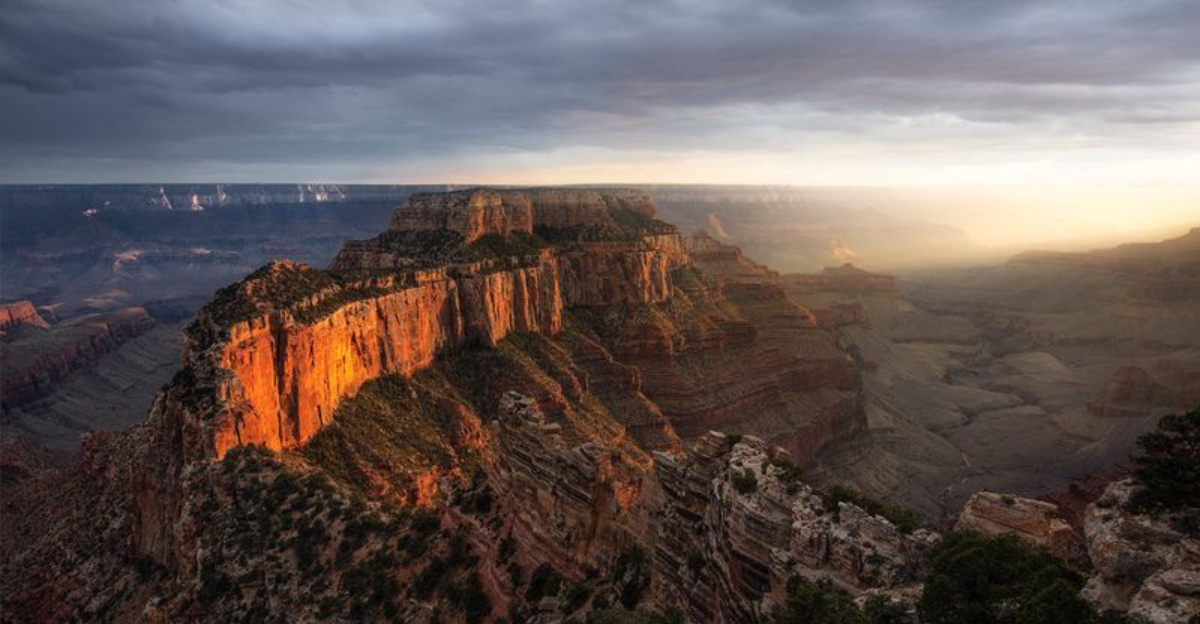
There’s nothing quite like that first breath you take standing at the edge—it’s raw, vast, and almost surreal. The Grand Canyon isn’t just a view; it’s an experience that shifts something in you. With every curve and color change, it tells a story written across millennia.
But not all viewpoints are created equal. From quiet rim-side lookouts to dramatic cliff-edge vistas, where you stand can shape how you feel the canyon. Here’s how to find the ones that truly stick with you.
1. Mather Point
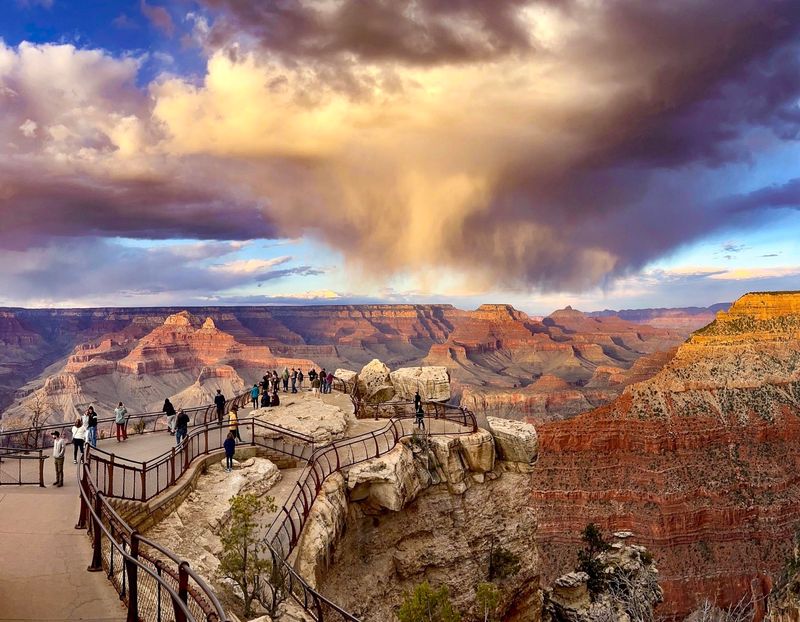
Just steps from the main visitor center sits one of the most accessible panoramas in the entire national park. Mather Point welcomes millions of visitors annually with its convenient location and jaw-dropping views.
The wooden railings and paved pathways make this spot perfect for families and those with mobility concerns. Despite the crowds, the expansive viewing area offers plenty of space to find your own perfect photo spot of the colorful canyon walls.
2. Yavapai Point
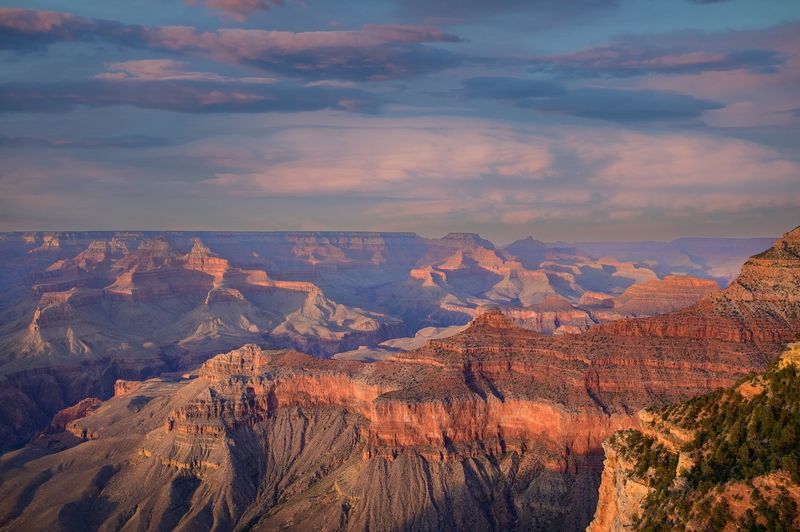
Knowledge seekers will find a perfect blend of education and inspiration at this remarkable overlook. The Geology Museum provides fascinating context for the breathtaking views just outside its doors. Yavapai Point offers some of the clearest views of the Colorado River snaking through the canyon floor.
Floor-to-ceiling windows in the museum provide climate-controlled viewing during extreme weather, while outside platforms let you feel the vastness of this natural wonder in all directions.
3. Yaki Point
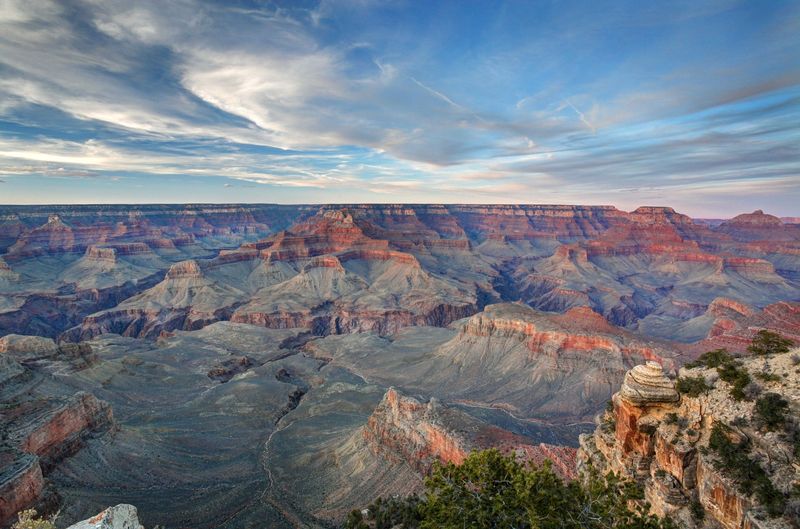
Sunrise enthusiasts gather at this eastern South Rim location to watch golden light slowly illuminate the canyon walls. The shuttle-only access creates a more peaceful atmosphere than drive-up viewpoints.
Yaki Point provides stunning views of the eastern canyon with fewer crowds than more accessible locations. The South Kaibab Trail begins nearby, making this a popular starting point for hikers heading into the canyon depths. Early morning visitors are often rewarded with wildlife sightings along the shuttle route.
4. Grandview Point
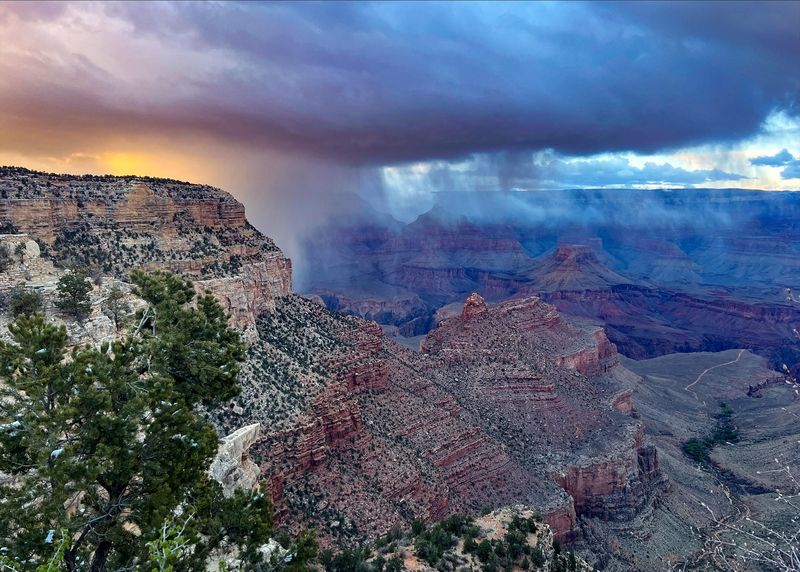
History and scenery blend perfectly at this significant overlook with ties to the canyon’s early tourism days. The copper miners who first developed this area knew they’d found something special. Grandview Point stands as one of the highest viewpoints on the South Rim at 7,400 feet.
Remnants of the historic mining operation add character to the stunning 270-degree panorama. Ambitious hikers can access the challenging Grandview Trail here, while casual visitors enjoy the expansive views without venturing far from the parking area.
5. Moran Point
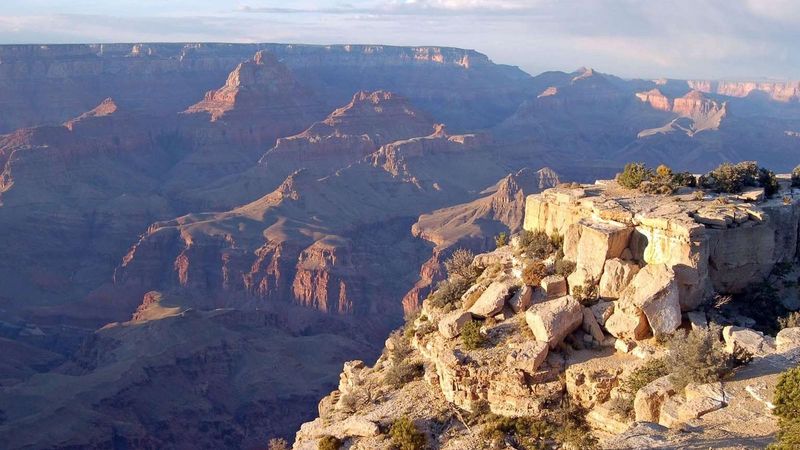
Geology enthusiasts marvel at the clearly visible rock layers that tell Earth’s ancient story at this photogenic overlook. The distinct bands of color – from the reddish Supai Group to the yellowish Coconino Sandstone – create a natural timeline.
Named after famous landscape painter Thomas Moran, this viewpoint inspired many early artistic interpretations of the canyon. The morning and evening light transforms the rock formations with dramatic shadows and glowing hues. A moderate-sized parking area means crowds typically remain manageable even during peak seasons.
6. Lipan Point
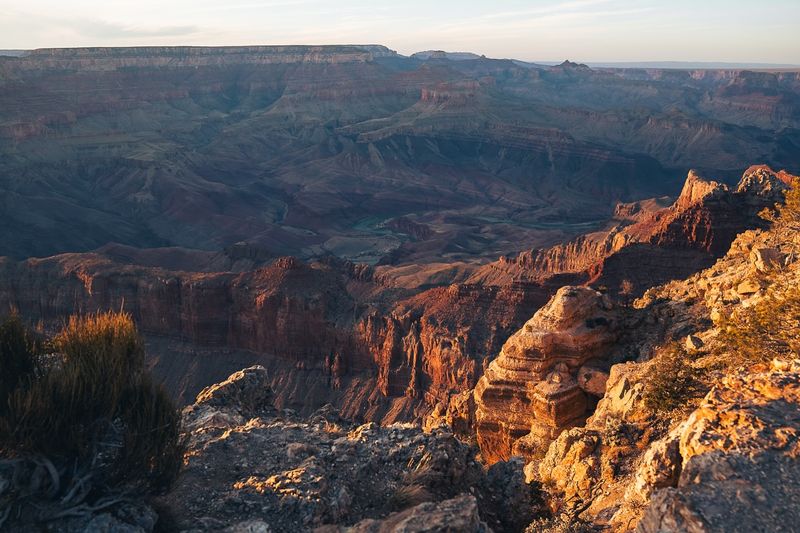
Early risers are rewarded with nature’s most spectacular light show at this eastern-facing overlook. The unobstructed views capture the Colorado River’s dramatic path through the canyon. Lipan Point offers one of the widest panoramas along the South Rim.
Photographers particularly appreciate the clear view of the river making its sharp bend around the Unkar Delta. The slightly higher elevation provides a different perspective than neighboring viewpoints, with distant plateaus and buttes creating a layered depth that showcases the canyon’s immense scale.
7. Desert View
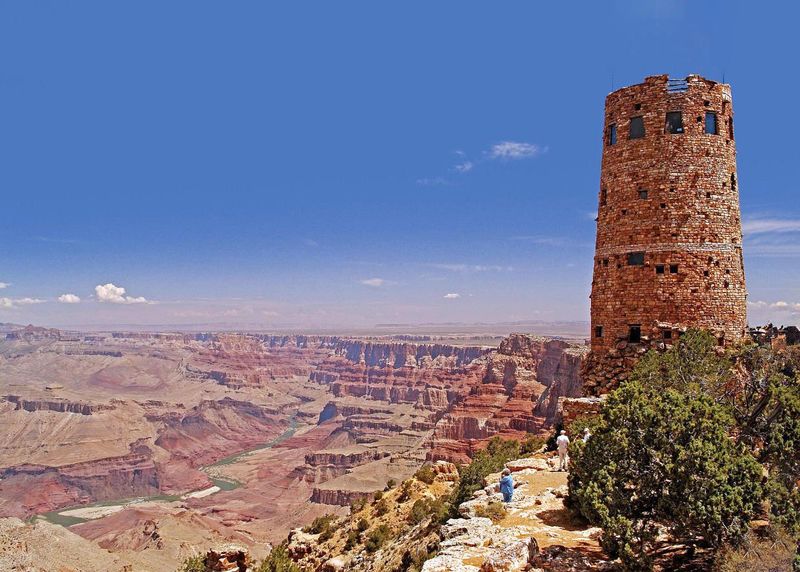
Combining spectacular vistas with practical amenities makes this eastern South Rim destination a perfect resting point during your canyon exploration. The historic stone watchtower stands as an architectural marvel against the natural backdrop.
Desert View offers the most complete visitor experience with restrooms, food options, and gift shopping available. The 70-foot Watchtower, designed by Mary Colter in 1932, provides indoor viewing areas and showcases Hopi-inspired murals. This is also the first major viewpoint when entering the park from the east entrance.
8. Hopi Point
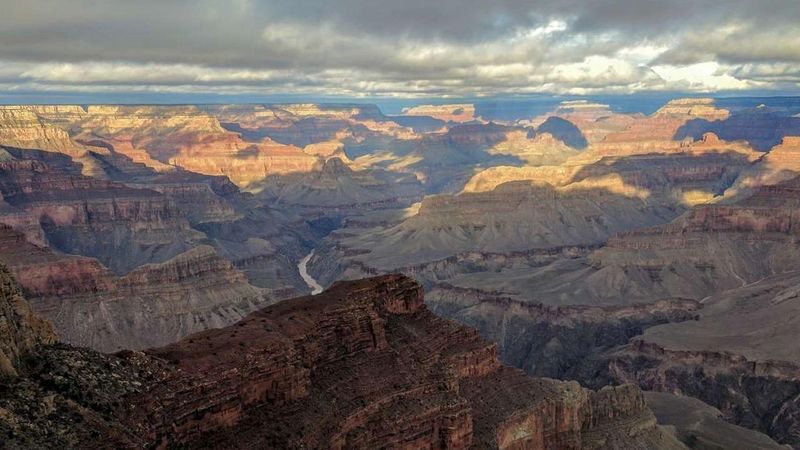
Sunset chasers gather religiously at this premier western-facing overlook to witness the day’s grand finale. The unobstructed views in multiple directions make it a photographer’s dream location. Hopi Point juts out further into the canyon than surrounding viewpoints, offering nearly 180-degree panoramas.
The canyon walls glow with vibrant orange and purple hues as the sun dips below the horizon. Accessible only by shuttle bus during peak seasons, planning ahead is essential to secure a prime sunset viewing spot among the crowds.
9. Mohave Point
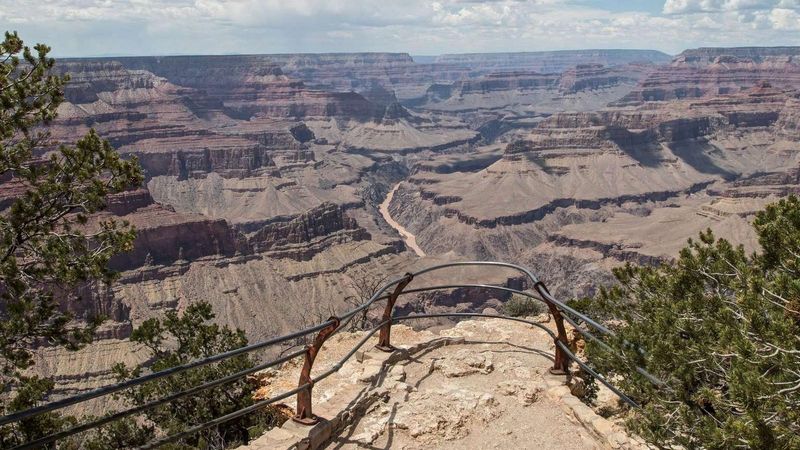
Tranquil moments await just a short shuttle ride from the busier overlooks along Hermit Road. The dramatic views of the Colorado River make this a favorite spot for photographers seeking that perfect shot. Mohave Point offers three separate viewing areas, allowing visitors to spread out and find their own peaceful corner.
The canyon’s immense scale becomes apparent as you can spot several rapids in the river far below. Morning visitors often enjoy having this spectacular viewpoint nearly to themselves, especially during off-peak seasons.
10. Pima Point
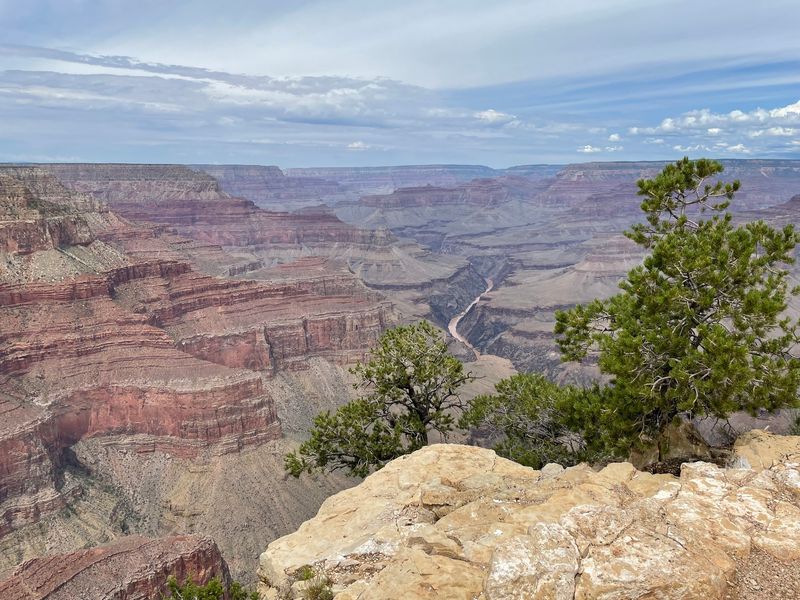
Listen carefully on a quiet day and you might hear the distant roar of Hermit Rapids far below this western South Rim overlook. The less-traveled location offers a sense of discovery that busier viewpoints can’t match. Pima Point provides one of the best views of the inner canyon’s dramatic rock formations.
The shuttle stop here sees fewer crowds than eastern points, creating a more intimate canyon experience. From this vantage point, you can trace the path of Hermit Trail as it winds down through the colorful layers to the river 3,500 feet below.
11. Bright Angel Point
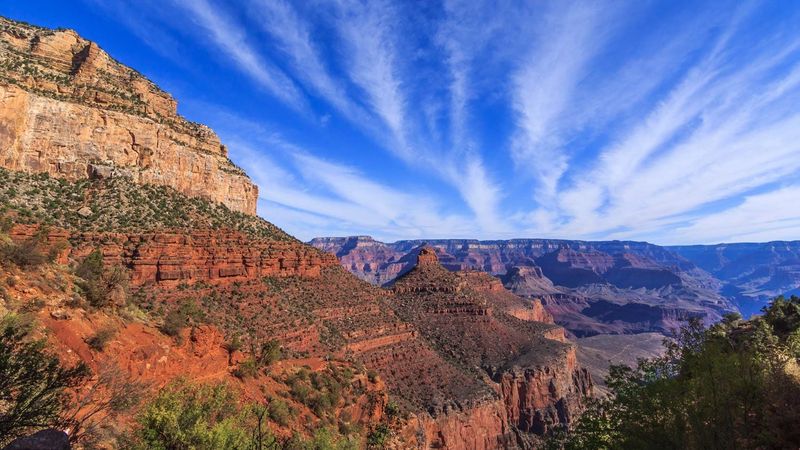
North Rim visitors find themselves standing on a narrow peninsula that extends dramatically into the canyon’s void. The short paved trail leads to an unforgettable panorama that feels more intimate than South Rim views.
Bright Angel Point sits 1,000 feet higher than its South Rim counterparts, offering a completely different perspective. The cooler temperatures and alpine surroundings create a distinct atmosphere. Morning visits often reveal wildlife grazing in nearby meadows before the day’s crowds arrive on this popular but less-visited rim.
12. Cape Royal
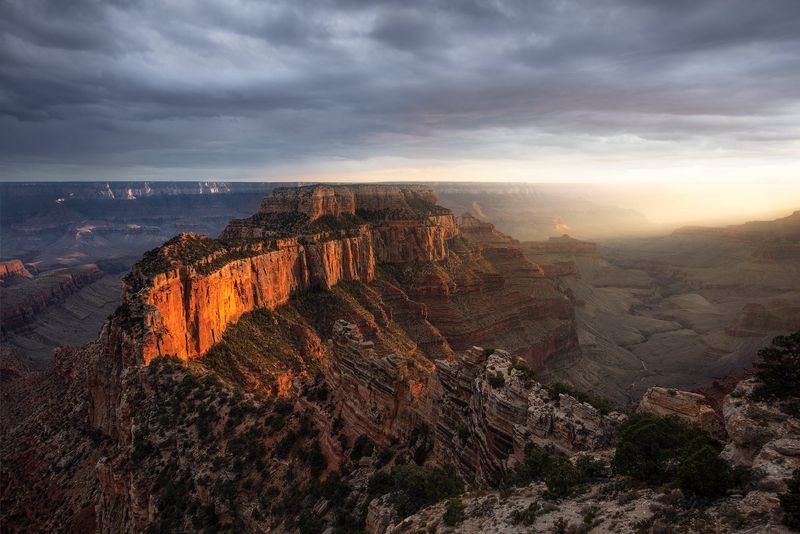
Natural stone windows frame postcard-perfect views at this remarkable North Rim destination. The paved trail winds through pinyon pines before revealing one of the most comprehensive panoramas in the entire park. Cape Royal showcases Angels Window, a large natural arch that perfectly frames a section of the Colorado River.
The viewpoint extends far into the canyon, creating the sensation of being surrounded by the vast landscape on three sides. Sunset visitors witness the changing colors across both the canyon and the Painted Desert stretching to the east.
13. Point Imperial
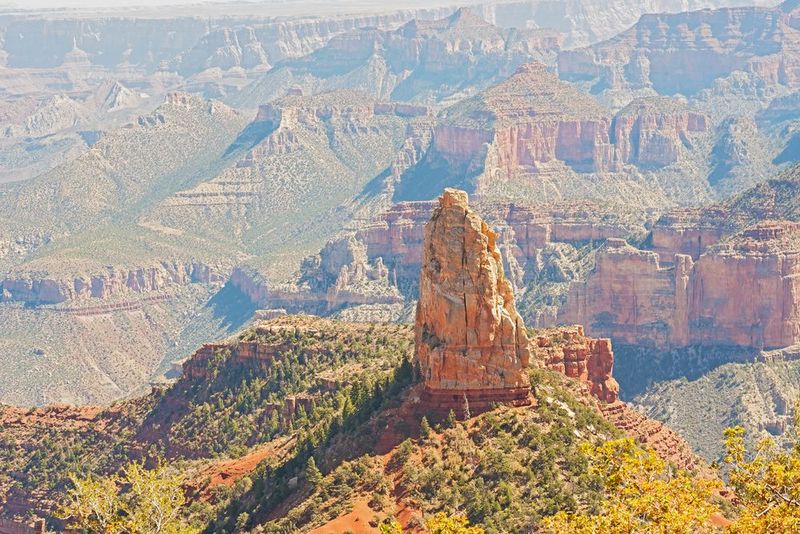
Towering at 8,803 feet above sea level, this northernmost overlook provides a completely different canyon experience. The higher elevation offers views of the Painted Desert and Little Colorado River Gorge not visible from other vantage points. Point Imperial stands as the highest viewpoint in the entire park.
Here, the dramatic drop-offs and eastern views create spectacular sunrise opportunities with Mount Hayden catching the first light. Ponderosa pines frame the scenery, adding to the North Rim’s more forested, alpine character compared to the desert-like South Rim.
14. Eagle Point
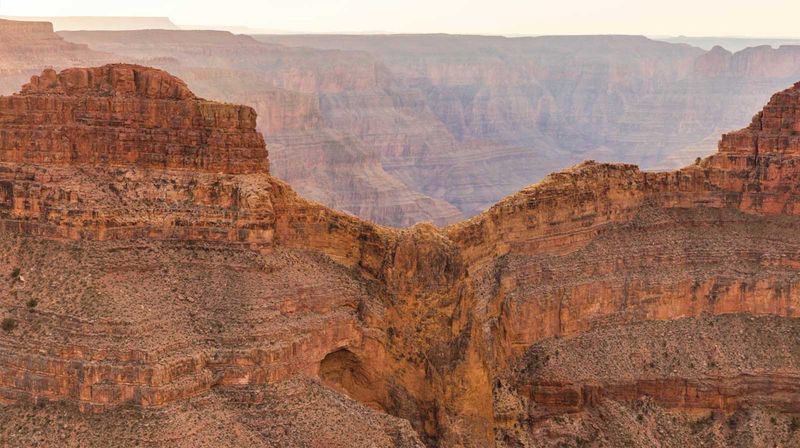
Thrill-seekers gather at this western viewpoint famous for its glass-bottomed Skywalk extending 70 feet beyond the rim. The natural rock formation resembling an eagle with outstretched wings gives this spot its evocative name. Eagle Point sits within the Hualapai Reservation rather than the national park.
The cultural demonstrations and Native American village offer educational context for understanding the canyon’s importance to indigenous peoples. Though requiring separate admission fees, the unique perspective and cultural experiences provide an alternative to traditional national park viewpoints.
15. Guano Point
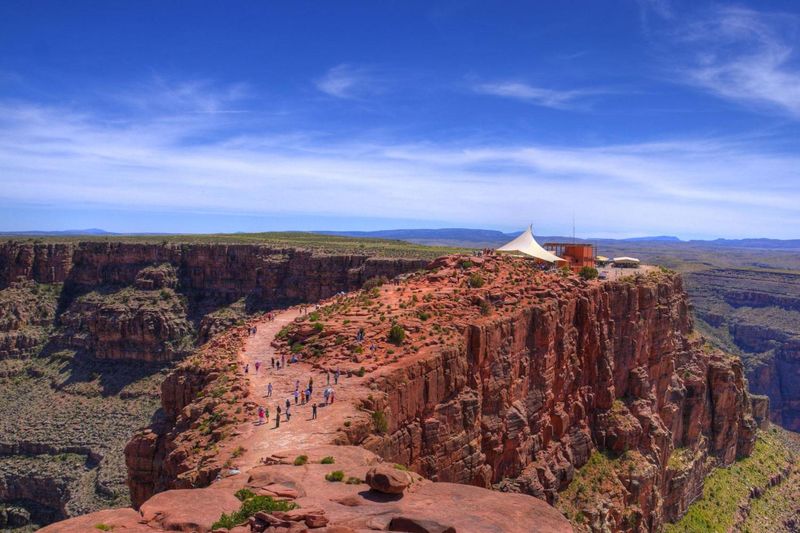
Adventurous spirits appreciate the rugged, undeveloped feel of this western viewpoint with remnants of an abandoned mining operation. The climb to the pyramid-shaped hill rewards with nearly complete 360-degree views. Guano Point offers a more rustic Grand Canyon experience on Hualapai land.
The historic aerial tramway ruins tell the story of a failed 1950s mining venture. Unlike the national park viewpoints, you can explore more freely here without railings or paved paths, creating an exciting sense of discovery as you find your own perfect viewing spot among the rocky outcroppings.
16. Shoshone Point
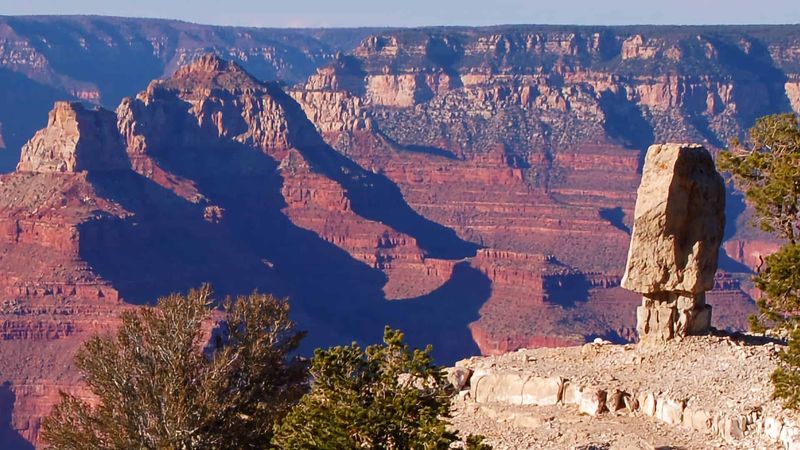
Hidden among the pines awaits one of the South Rim’s best-kept secrets, accessible only to those willing to take a pleasant one-mile hike. The effort filters out casual tourists, rewarding hikers with remarkable solitude.
Shoshone Point features a large pine-covered outcropping that extends dramatically into the canyon. The flat area at the end makes it popular for small weddings and private events. Unlike other viewpoints, you might find yourself completely alone here, especially during early morning hours or weekdays outside peak season.
